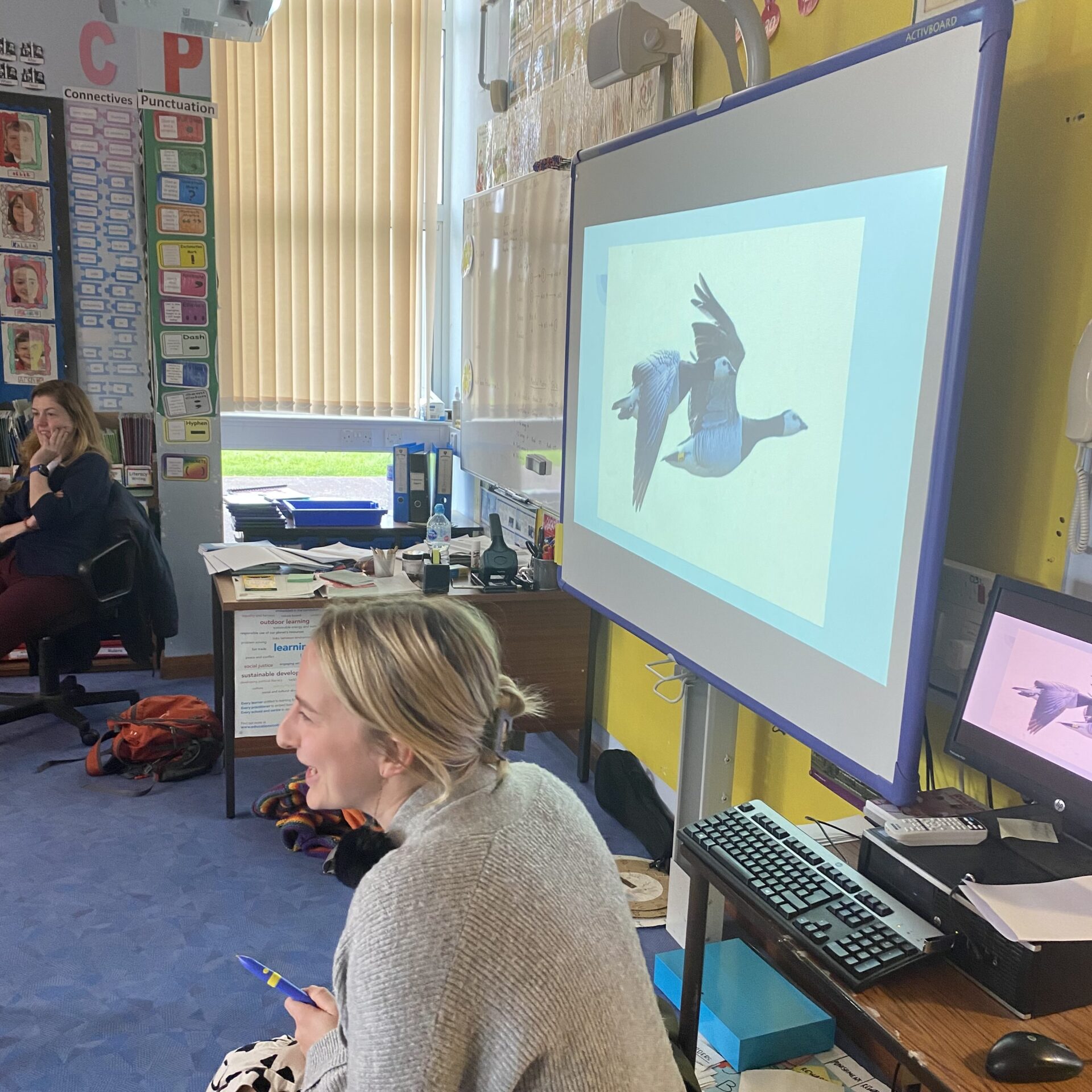A Reflection Piece on Working with Caerlaverock Primary School by Morgan Love
Since joining the Stove in early June 2022, the Creative Spaces team have been embedded in the projects that make The Stove. From Nithraid, in August, to the recent kNOw One Place forum, the wider Stove has inspired and nourished the time and efforts of our team. It was therefore no surprise that we were asked to take on a role within this year’s Wild Goose Festival.
Since it emerged in 2020, Wild Goose Festival has become a core event in the Stove’s annual program. With the aim of uniting arts, culture, nature, community and heritage, the festival highlights the important relationship between Dumfries & Galloway and the thousands of species of geese that migrate to the region each autumn. Using this unique occurrence as a symbol of the journeys we all make, our relationship with the natural world and how we as humans fit into it all, Wild Goose Festival aims to offer an opportunity for everyone to get involved.
This year, the Creative Spaces team have been tasked with developing a working relationship with Caerlaverock Primary School, which is situated close to the estuary where the geese spend the season, and engage with the pupils through creative learning.
The opportunity to work with these youngsters is quickly proving to be both a fruitful and rewarding experience, but one that has also come with its own challenges and learning curves for us as creative practitioners.
We started this project in mid-summer when autumn and migration seemed seasons away. Working with the teaching staff, we translated ideas from our initial discussions with the school to develop a to mind map of our thoughts, developing our plans for what we wanted to deliver to the children.
With the support of Jan Hogarth from Galloway Glens Landscape Partnership and exemplary guidance from Graham Rooney, Lead Producer of Wild Goose, lesson plans and activities began to emerge from our fascination for our feathered visitors. With an unwavering enthusiasm to share all that we had learned and planned with the children, who share their environment momentarily with the geese, when September was in our sights, we solidified our first outing to Caerlaverock.
The team headed out to the school on a Tuesday afternoon, balancing a healthy combination of excitement and nerves between the four of us. Our years as youngsters seemed so long ago to us, and it appeared we forgot that stepping into a primary school was like stepping into an entirely different world, helmed with curiosity, energy, and openness.
Caerlaverock Primary School welcomed us with a genuine interest in what we hope to achieve in our time with them. Our arrival coincided with the lunch break, and the excitement of the children carried through to their arrival into the classroom. In our efforts to break the ice, we took the thirty kids out into the playground and played games to get to know each other. Once the energy and excitement reached a manageable level, we split up the juniors and seniors and headed back into the school to get goosey.
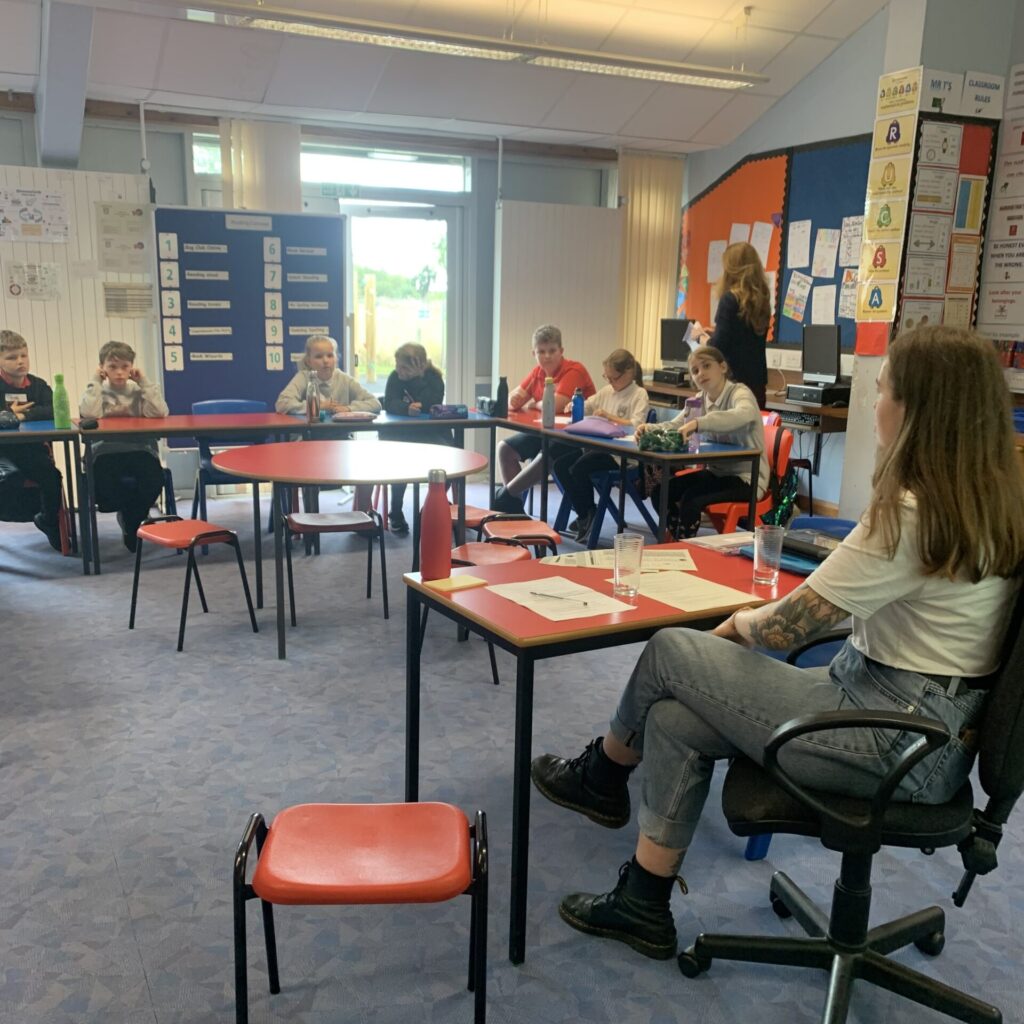
Each class started the same way – a crash course in barnacle geese. Here, we shared what we have learned about barnacle geese with the children, with the hope that they could become as enthused by their autumnal neighbours as we are. To our delight, zealously, the children began to ask questions to nourish their understanding more. They were engaged and excited, and for us, we felt like the foundation for the rest of the time we would spend with them, was solidly forming.
The Creative Spaces team decided during the planning session that a divide and conquer technique would be most beneficial for us and the children. We split into pairs, two of us working with the junior school the other two working with the seniors.
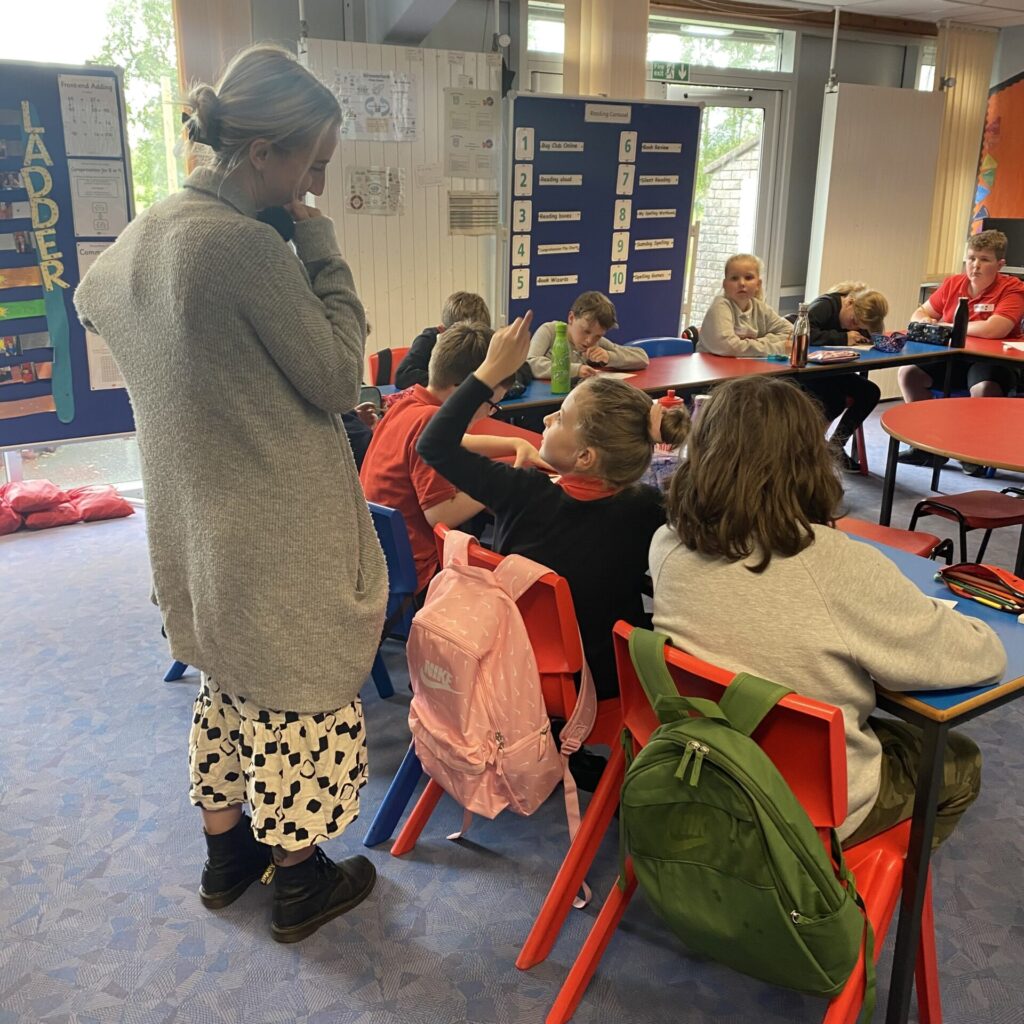
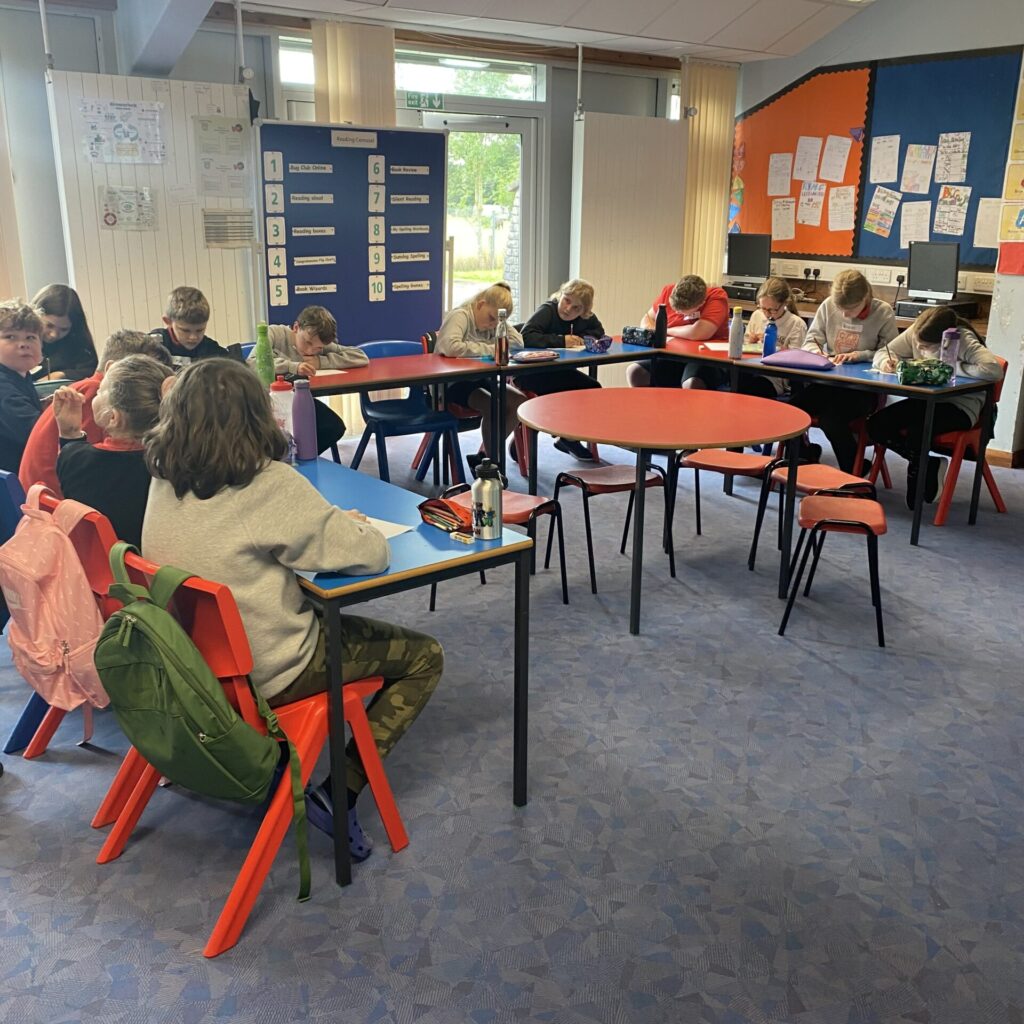
Our aim with the juniors is to create and produce a performance about a goose who is left behind in Caerlaverock, and how that goose would feel during this time of isolation, as well as how the other geese feel when they realise they’ve left behind member of their flock.
The senior school, on the other hand, will be working to design a handbook on Caerlaverock and the barnacle geese, which will be produced to inform part of the Wild Goose Festival Hub towards the end of October. The children will play a key role in the creative process of designing the handbook being produced.
Given that the outcomes for each group are different, our approach to the sessions varied between the two classes. With the junior class, we broke off into a storytelling session, where we read Borka: The Adventures of a Goose With No Feathers. The story is about Borka, a goose who is born with no feathers, is left behind by the rest of the flock and has to figure out her next step. The purpose of reading this story was to help the children imagine what it would be like for a goose who was treated differently for being unique, which in turn, would help them to discuss the emotions that we feel when we are singled out or left behind. The conversation after the storytelling allowed the children to discuss and reflect on the feelings of being alone, which will inform the emotions of the goose in their play.
To lighten the mood, we broke out into groups to act out some of the scenarios the children saw in the book. Our intention was for them to spend five minutes at each of the four scenarios, however, it quickly became clear that the children had their own suggestions on how the session should be structured. While some were happy to act, some wanted to express themselves through drawing, and others wanted to write. We realised that for the children to get the most out of our short time we had with them, they should be the ones to steer us in the right direction, not the other way around. The classroom developed into different stations that the children could dip in and out of, or remain if they wished. To see them freely link up their knowledge with an art form that they felt most comfortable with was an extremely special thing to behold.
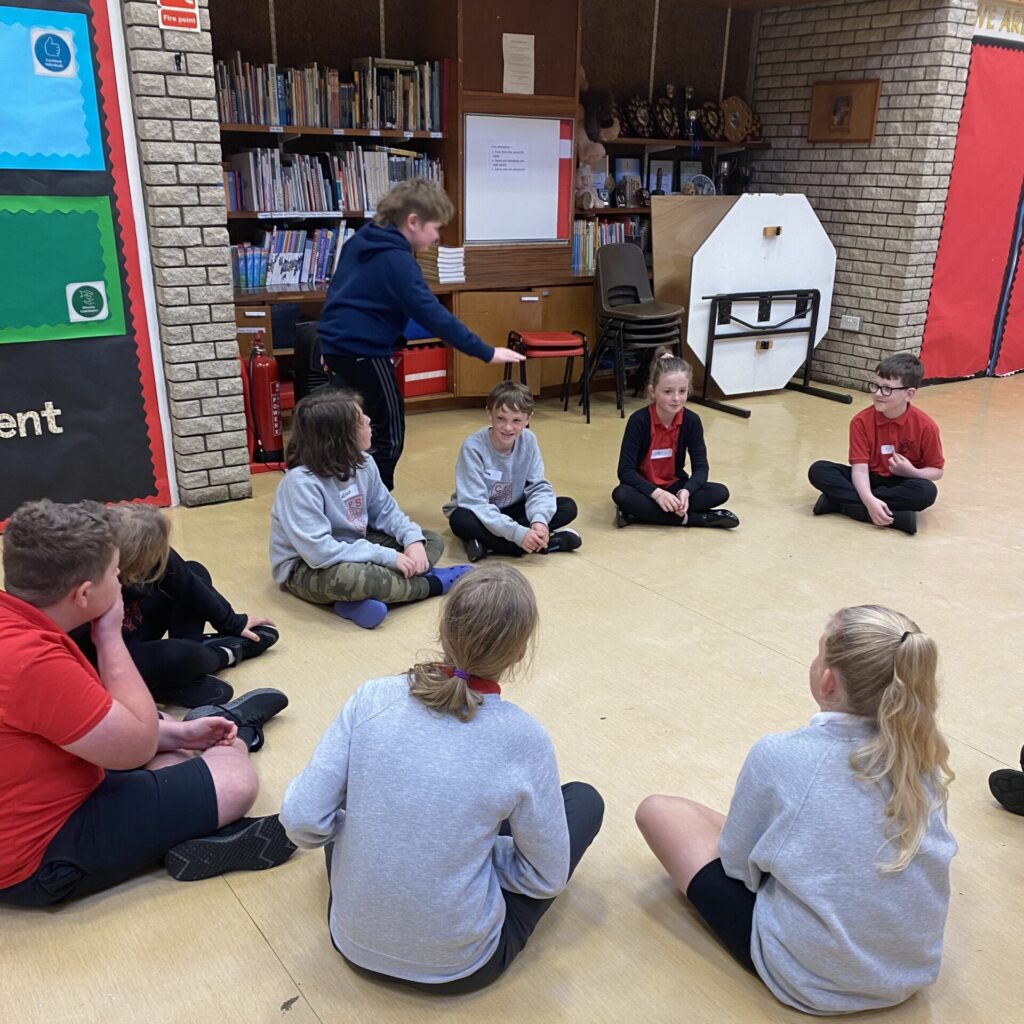
While an hour and a half session seemed insurmountable on our journey out the school, wrap up time came by, and an air of disenchantment was felt. With a two-minute warning, the children were eager to show their drama performances, display their artwork proudly, and capture our attention for as long as they could. When we gathered them after the time was up onto the carpet, we announced that our plan to create a short play with them. The excitement came in twofold – firstly for the play, secondly for the fact that we would be returning at all.
Overall, our first foray into the primary school has proven to be a valuable experience for us as emerging practitioners, discovering the excitement and ideas that can from the minds of youngsters. Their curiosity and enthusiasm reminded us how wonderful the mundane can be – and will carry us through until our next meeting.
